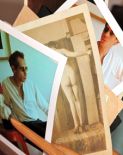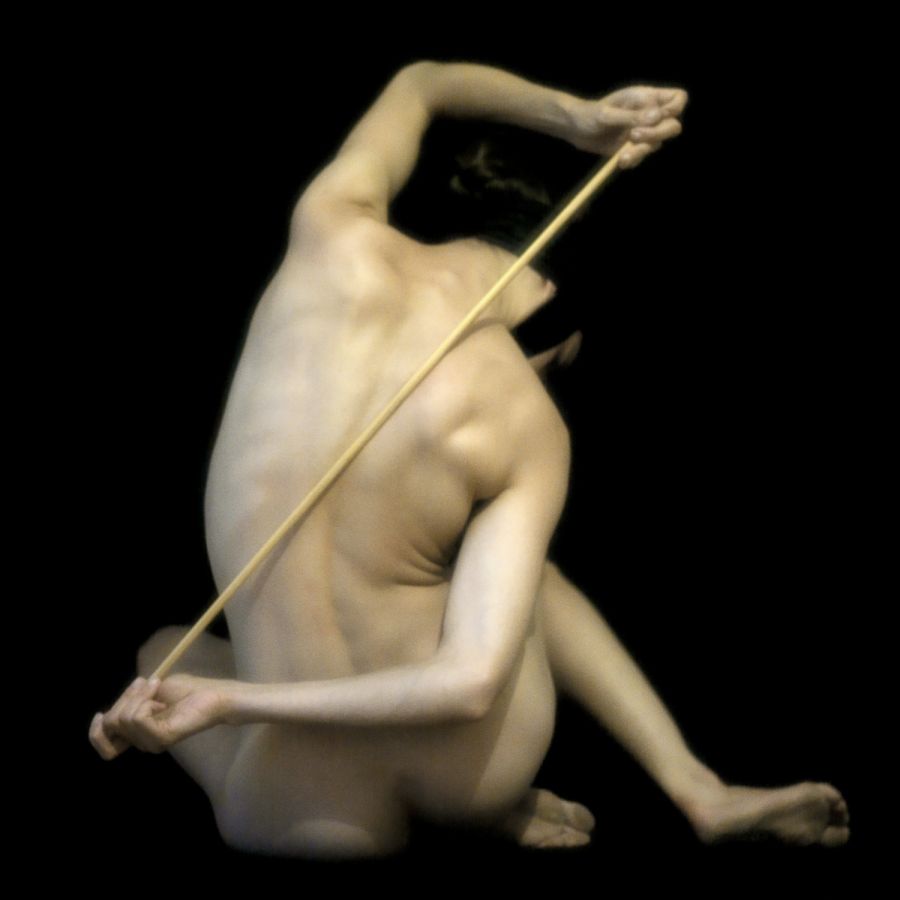About the artist

Now based in Mexico City, after many years in Paris,
Fernando Etulain could have been André Breton’s travelling companion or Jean Cocteau’s sidekick – he shares their Surrealist and dandy spirit. In his series
Farbtafel (2008), he placed a dollar bill on a Hans Holbein portrait, a French shortbread biscuit on a Dürer oil painting, and clothes pegs on a painting by Max Liebermann depicting women in a flax barn. Etulain reinterprets and twists. In another of his series,
Satyrus Paniscus (2009), he tore up pages from porn magazines, isolated details, and then assembled the bits into almost abstract shots. Again, he borrowed from history when he offered a series of clear, airy still lives inspired by Isaac Newton’s experiments (
Chronoradial, 2009) with light refraction. Here, the classic nude is revisited with the subtle and delicate touch that permeates his work.
Interview
Your photographic work has often approached still life through
compositions of objects. In this series, Life on Still, you have turned
to living matter, to flesh. What was the idea behind this project?
Life on Still is a collection of photographs taken at different times
and in different locations. The fact that the subject here is a human
body does not modify my approach, which is quite similar to what I do
when I shoot compositions of objects or landscapes. The basic idea was
the same, namely that a form of animism can emerge from the way
inanimate objects are positioned within a representational device. In
both cases, my purpose is to suggest an organization of human
experiences and their surroundings.
Here, flesh is shaped by the light, its muscular structure enhanced.
Your vision of the body is almost sculptural, with poses often
reminiscent of academic nudes; some, with their soft lighting, even
evoke Ingres. The nineteenth century witnessed the invention of
photography, which, interestingly, was used by painters to prepare their
compositions. Did you deliberately seek to follow academic traditions
through an original usage of the photographic medium in its own right?
I had no particular desire to claim lineage with a specific tradition
here, although a large part of my training as a photographer was indeed
closely related to the fine arts in the classical sense, hence to the
academic. I simply draw from the past and present. It is also true that I
am very aware of the effects of composition and lighting on objects,
and this owes much to the associations I make between photography and
painting. This applies to most of my work, and such pictorial references
often come to mind. For these particular images, the work of
Jean-Auguste-Dominique Ingres was important to me: it drew my eye
towards a sense of beauty and the sublime in art as imitation.
Why do you think body and flesh are now relatively neglected subjects in contemporary photography?
I have a feeling that contemporary art and photography have been seeking
to become detached from the figurative. Abstraction appeared in art,
and it has become difficult to return to the figurative without being
perceived as anachronistic in relation to the word “contemporary”. I
have however had many opportunities to enjoy the work of artistic
photographers and contemporary artists whose work focuses on human
morphology and body language, with very striking results, brimming with
brute, elemental force.
Limited edition, numbered and signed.
Selected shows and awards
Cromatografías, Mexico, 2014
LadoB, 3RD EYE, Mexico, 2011
Haus, Centro de diseño cine y television, Mexico, 2011
Bricks & Walls, Ediciones Jalapa, Mexico, 2010
Tapetes, Anudando Historias, Museo Franz Mayer, Mexico, 2010
Cesta, Ediciones Jalapa, Mexico, 2009
XIII Bienal de Fotografia, Centro de la Imagen, Mexico, 2008
Selected publications
Peepingtom Digest # 2, An Exploration of the Mexican Contemporary
Art Scene, Peepingtom Gallery, Caroline Niemant et Stephane Blanc,
Paris, France, 2011
Farbtafel y El Registro Sin Imagen, Periplo, vol. VII, Brenda Ledesma, Mexico, 2011
Tapetes, Anudando Historias, Museo Franz Mayer, Jaime Odabachian y Lorenzo Alvarez, Mexico, 2010
Cantera de Diseño, Centro de diseño cine y television, Renata Becerril, Mexico, 2010
Roma / Roma, Galeria Labor / Pechacucha, Giorgio Blasi, Mexico, 2009
XIII Bienal de Fotografia, Centro de la Imagen, Juan Antonio Molina, Mexico, 2008

 Now based in Mexico City, after many years in Paris, Fernando Etulain could have been André Breton’s travelling companion or Jean Cocteau’s sidekick – he shares their Surrealist and dandy spirit. In his series Farbtafel (2008), he placed a dollar bill on a Hans Holbein portrait, a French shortbread biscuit on a Dürer oil painting, and clothes pegs on a painting by Max Liebermann depicting women in a flax barn. Etulain reinterprets and twists. In another of his series, Satyrus Paniscus (2009), he tore up pages from porn magazines, isolated details, and then assembled the bits into almost abstract shots. Again, he borrowed from history when he offered a series of clear, airy still lives inspired by Isaac Newton’s experiments (Chronoradial, 2009) with light refraction. Here, the classic nude is revisited with the subtle and delicate touch that permeates his work.
Now based in Mexico City, after many years in Paris, Fernando Etulain could have been André Breton’s travelling companion or Jean Cocteau’s sidekick – he shares their Surrealist and dandy spirit. In his series Farbtafel (2008), he placed a dollar bill on a Hans Holbein portrait, a French shortbread biscuit on a Dürer oil painting, and clothes pegs on a painting by Max Liebermann depicting women in a flax barn. Etulain reinterprets and twists. In another of his series, Satyrus Paniscus (2009), he tore up pages from porn magazines, isolated details, and then assembled the bits into almost abstract shots. Again, he borrowed from history when he offered a series of clear, airy still lives inspired by Isaac Newton’s experiments (Chronoradial, 2009) with light refraction. Here, the classic nude is revisited with the subtle and delicate touch that permeates his work. 